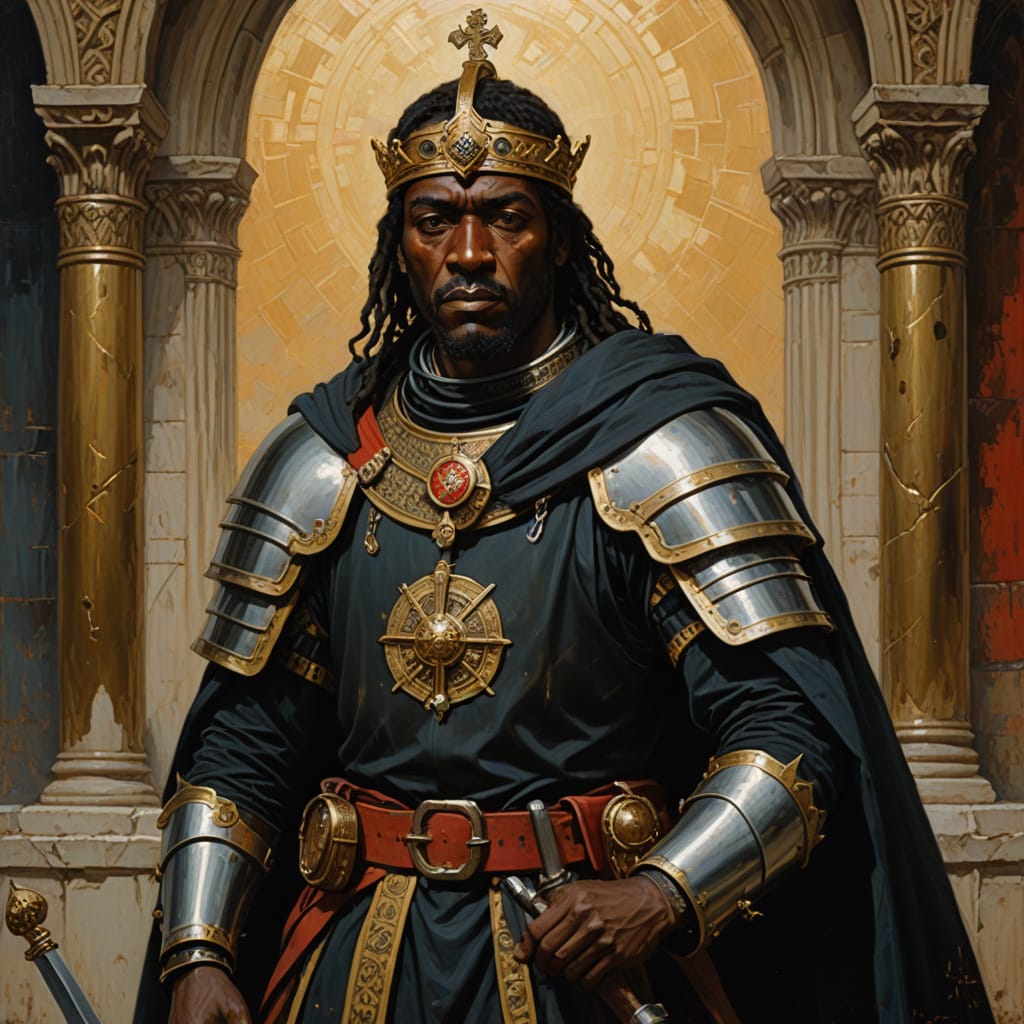
Oh, hear me! Let my voice explode like the thunderclap of my soul! Let the heavens themselves tremble and roar in awe as I proclaim the legendary saga of Maurice—a lion-hearted, unbreakable warrior whose fire-borne spirit ignites the very heavens with an unstoppable blaze of passion and unwavering faith!
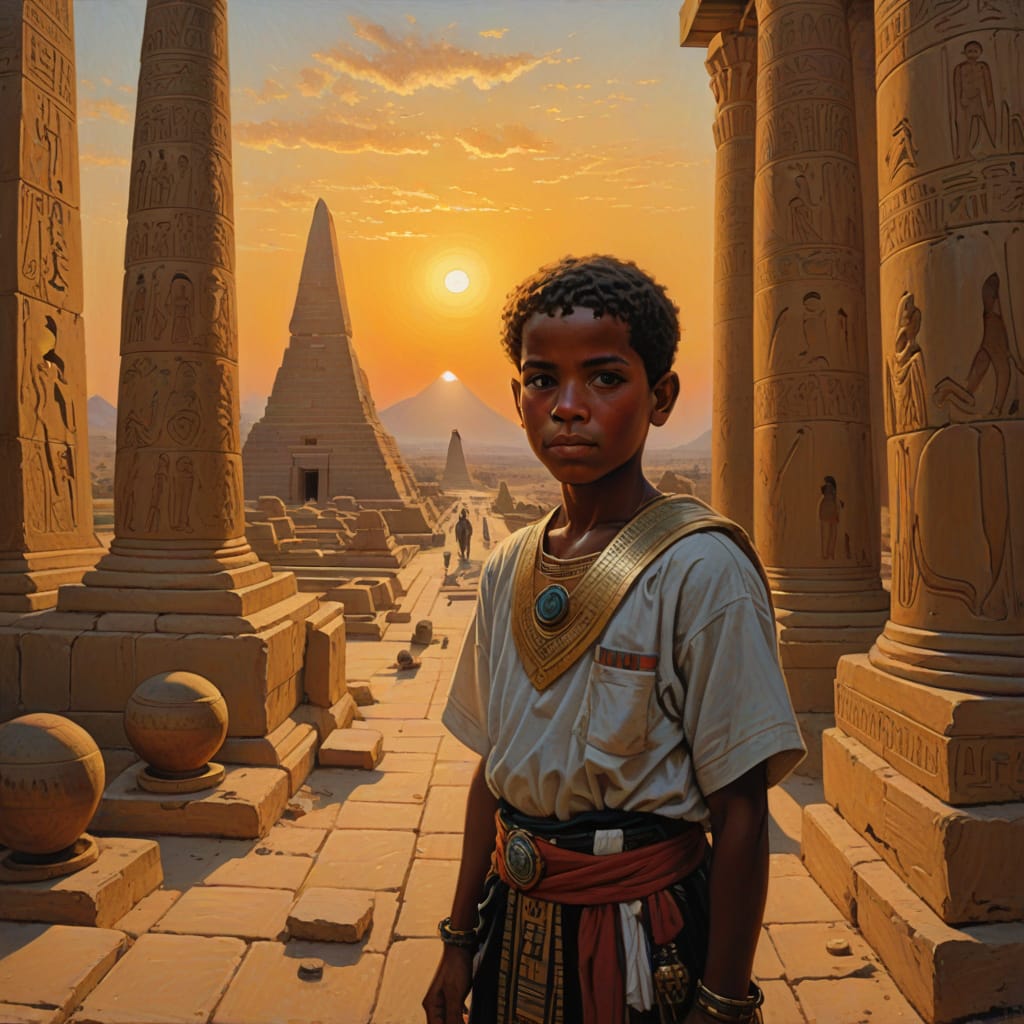
According to venerable hagiographical tales that stir the soul with their sacred reverence, Maurice was a noble Egyptian soul, born under the divine stars in the year of our Lord 250, in the illustrious city of Thebes! Oh, Thebes—an awe-inspiring, majestic metropolis of antiquity, the very heart and soul of Upper Egypt, once crowned as the proud capital of the glorious New Kingdom (1575–1069 BC)! It was there, amidst the splendor of its sacred temples and the whispers of history echoing through time, that Maurice was lovingly raised, nurtured by the sacred land of Thebes—Luxor—where the sands of eternity cradle dreams of greatness, and the spirit of Egypt’s ancient glory forever ignites the fire of passion within!

This is the legacy of a hero whose spirit soared beyond mortal bounds, climbing relentless skies to command the mighty Theban Legion—a thousand Christian souls united by divine purpose, standing firm against a trembling world gripped in fear and darkness! Can you feel it? The electrifying surge of their divine mission? Called forth from Egypt’s holiest lands to the savage, brutal mountains of Gaul, they faced the monstrous onslaught of pagan darkness—an idol’s cold, unholy grip! Yet Maurice, fierce and unyielding, shone like a blazing star—an eternal torch of divine light! His voice—more deafening than thunder—cried out, “To God alone do I pledge my soul! Let allegiance to Heaven eclipse all earthly loyalties!” With passion that shook the very earth, he declared, “Service to the Creator is the noblest honor! War and slaughter—such abyss—unthinkable for hearts that beat with Christ’s love!”
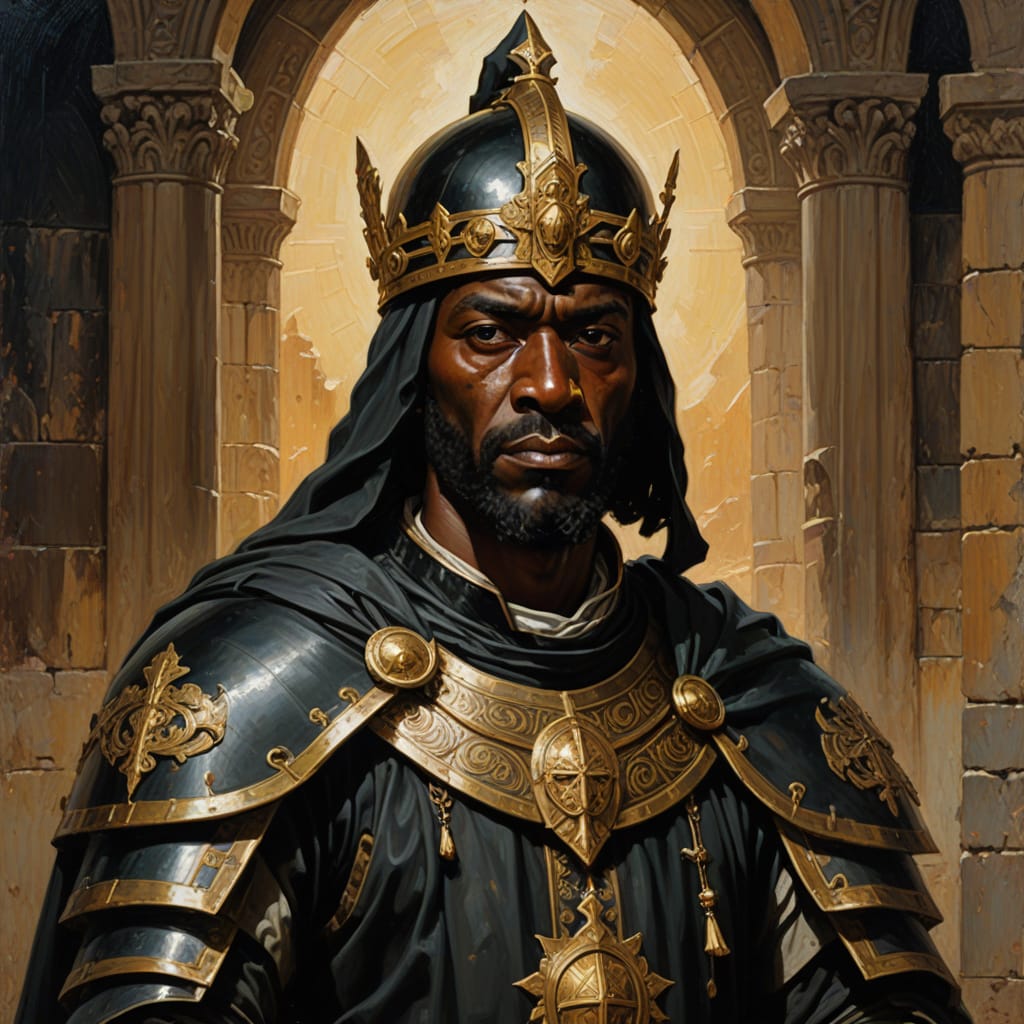
Maurice, a brave and unwavering soul, dedicated his life to the cause of honor and justice by becoming a soldier in the mighty Roman army! With relentless courage and indomitable spirit, he ascended through the ranks, each victory fueling his fiery passion until he soared to the pinnacle of leadership as the commander of the legendary Theban legion! Imagine it—approximately a thousand warriors, hearts ablaze with loyalty and sacrifice, rallied by his unwavering resolve! But amidst this fiery ascent, Maurice’s spirit shone even brighter—an admitted Christian in a time when his faith was declared a threat to the mighty Roman Empire! A beacon of defiance and unwavering conviction, he stood boldly, risking everything for his beliefs, embodying the very essence of fearless devotion and unbreakable hope!

The legion, entirely composed of Christians, had been called from Thebes in Egypt to Gaul to assist Emperor Maximian in defeating a revolt by the bagaudae. The Theban Legion was dispatched with orders to clear the Great St Bernard Pass across the Alps. Before going into battle, they were instructed to offer sacrifices to the pagan gods and pay homage to the emperor.

When Maximian ordered them to murder local Christians, they refused. Ordering the unit to be punished, Maximian had every tenth soldier killed, a military punishment known as decimation. More orders followed, the men refused compliance as encouraged by Maurice, and a second decimation was ordered. In response to the Theban Christians’ refusal to attack fellow Christians, Maximian ordered all the remaining members of the legion to be executed.
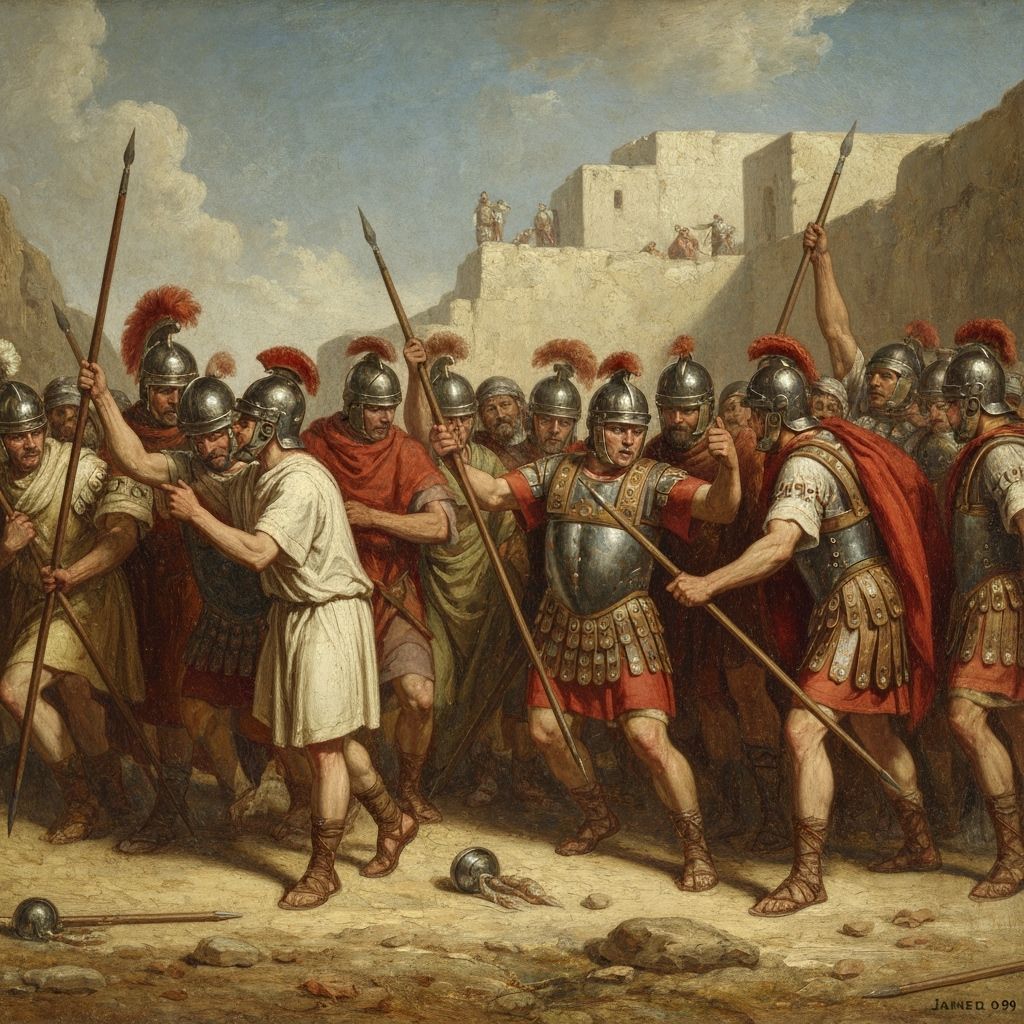
What—a nightmare! The tyrant Maximian’s wicked command: to slaughter innocent brothers and sisters in faith—fellow Christians threatened by false gods and unholy regimes! But Maurice’s stand was an unbreakable fortress of defiance—an impassable wall of fire against tyranny! The cruel decree of decimation—one in ten fallen—yet Maurice and his sacred band refused to bend, refused to forsake their divine King! They faced death with eyes ablaze, earth trembling beneath their feet, their blood an unbreakable baptism of pure sacrifice! The land of Agaunum—renamed Saint-Maurice—bears the sacred scars of their martyrdom, a monument to the indomitable spirit that no darkness can quench!

So, behold the harrowing words that echo through the ages, the earliest cry of their sacrificial agony! Encased within the sacred pages of a public letter penned by the noble Bishop Eucherius of Lyon—whose heart beats with divine fervor between the years 434 and 450—these words passionately recount the anguished martyrdom of the faithful. Imagine the thunderous silence shattered by the accounts of trembling soldiers, their very souls torn asunder, when they refused Maximian’s ruthless commands—only after a heartbreaking revelation: that beneath the ruins of a destroyed town lay innocent, blameless Christians, victims of a brutal and merciless persecution!
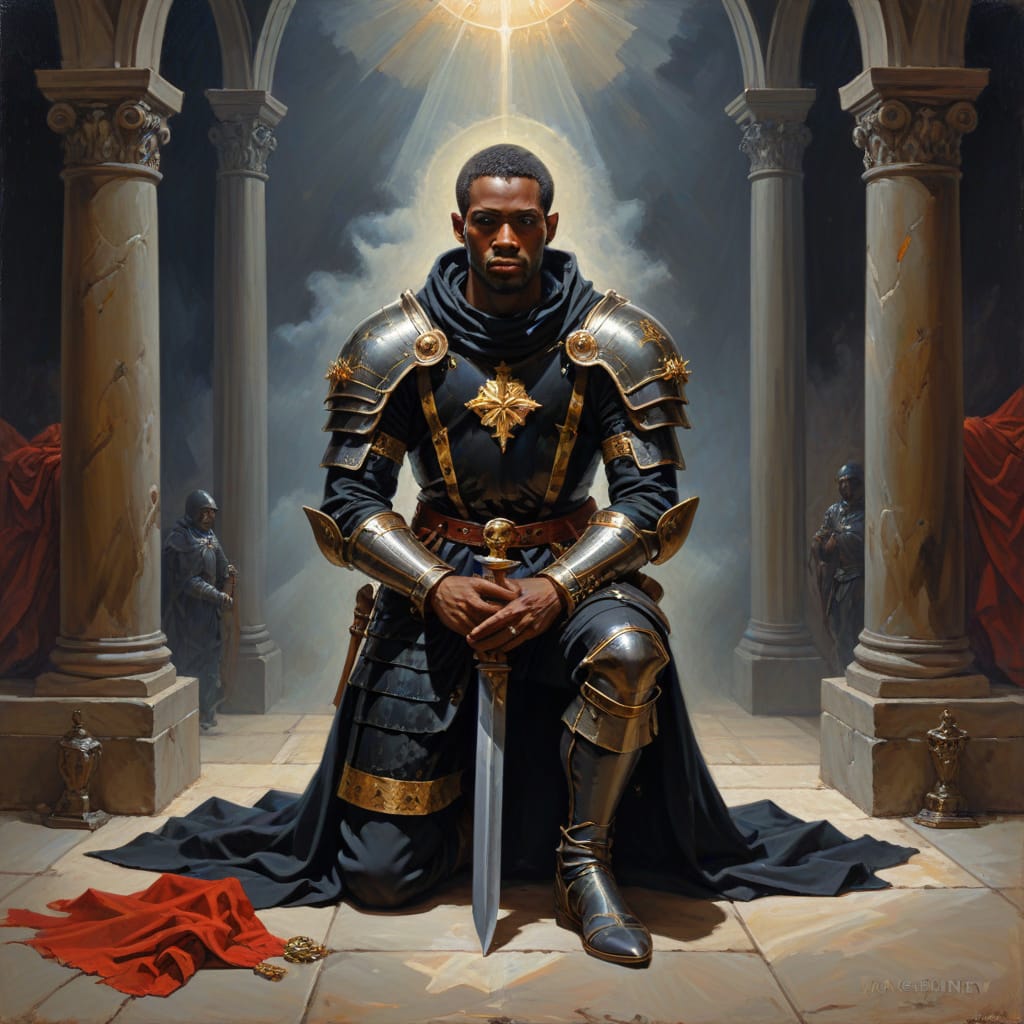
Feel the raw, unyielding fire of their faith, blazing defiantly against the oncoming storm, refusing to betray their Savior. And yet, the tragic climax—when the emperor, cold as iron, condemned these brave souls to death, simply because they reverently refused to bow to the pagan Roman gods! Oh, the agony, the unbreakable spirit, the purest martyrdom sealed in their fiery sacrifice—an eternal testament to unwavering faith in the face of overwhelming darkness!
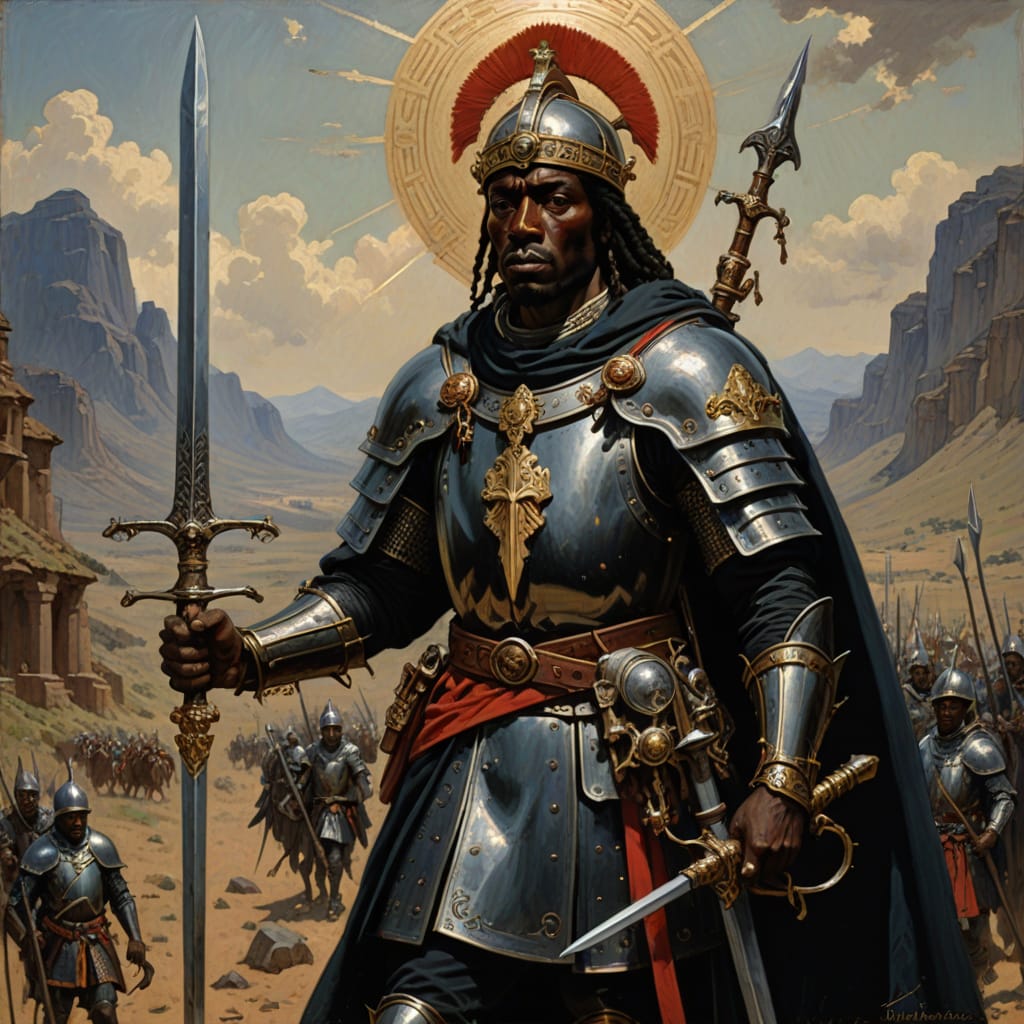
Veneration! Oh, the divine reverence that enveloped Maurice, elevating him to the sacred status of a beloved patron saint of the mighty German Holy Roman Emperors! Can you feel the thunderous awe that shook the very heavens when, in the year 926, Henry the Fowler—this titan of kingship—beyond mere mortal ambition, ceded to the blessed abbey the wondrous Swiss canton of Aargau, not out of conquest, but in a divine exchange for Maurice’s sacred lance, sacred sword, and sacred spurs! These relics—oh, these hallowed insignia—became the very soul of royal power, wielded during imperial coronations until the tragic dawn of 1916. The sword and spurs of Maurice—embodying divine authority—stood as impregnable symbols atop the imperial throne, their legend echoing through the ages, even though the actual sword hailed from the distant 12th century! And the powerful, sacred act of anointing by emperors before the sacred Altar of Saint Maurice at St. Peter’s Basilica—oh, how it signified divine approval, eternal kingship, and earthly authority intertwined in celestial splendor.
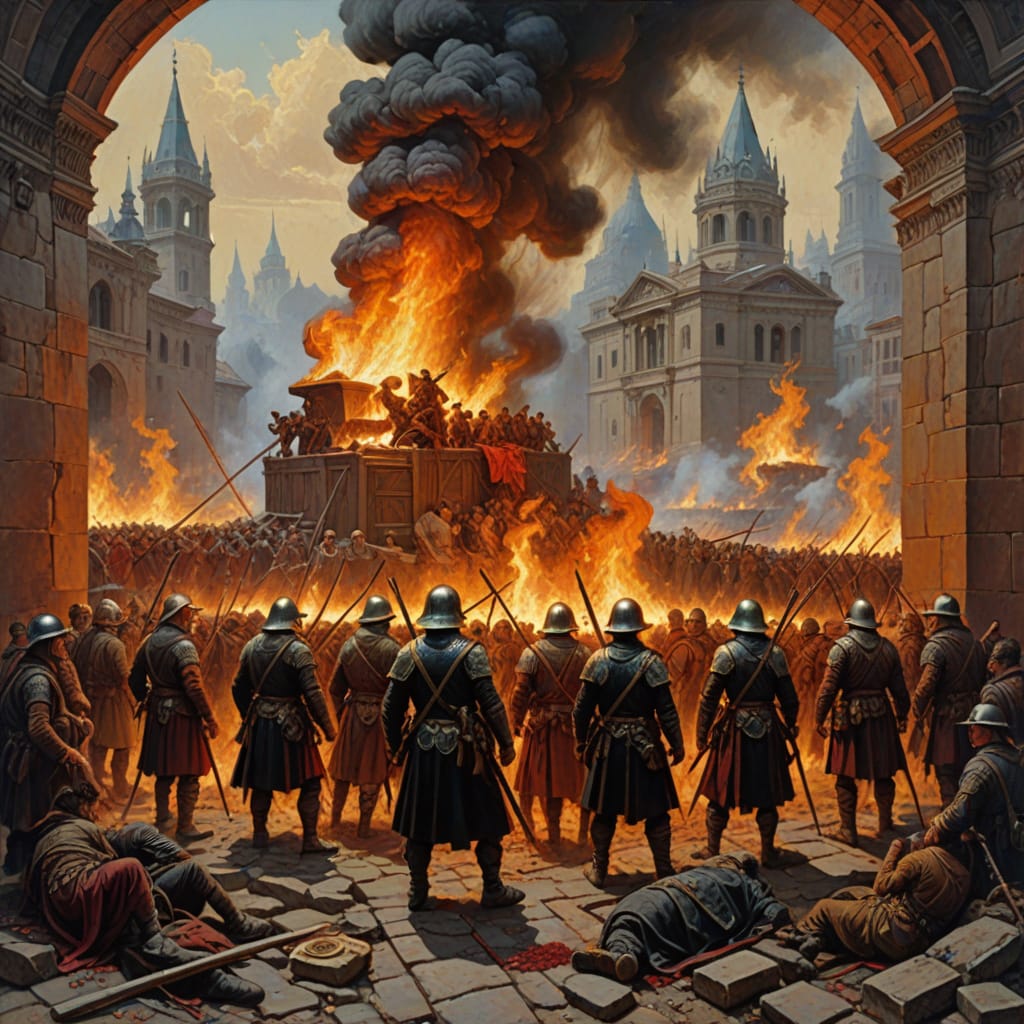
Oh, how history’s tapestry is woven with the blood, sweat, and divine fire of these giants—passionately celebrating the sacred union of divine grace and imperial might!
Feel the soul-stirring echo of their sacrifice reverberate through the ages! Their heroic refusal to kneel, to betray—an eternal flame that ignites hope in the hearts of nations! A symbol of loyalty unshaken, their story fuels the flames of courage in the bravest souls! To this day, Saint Maurice’s name resounds through halls of power and across generations—an eternal beacon inspiring empires to greatness! The Holy Roman Emperors, draped in grandeur and awe, bowed before relics of divine authority—his lance, his sword, his spurs—the sacred artifacts of eternity and divine justice! His armor, emblazoned with a blood-red cross, roars as a battle cry for warriors of faith—defenders of righteousness and hope!
His legacy—a fearless, sprawling titan—embodying the very essence of valor! From the sacred sanctuaries of Switzerland—Saint-Maurice-en-Valais, the Engadin, Einsiedeln—to the proud banners of the Order of the Golden Fleece and the Order of Saints Maurice and Lazarus—his name echoes as a rallying cry for chivalry, for heroism, for divine justice! Across continents—France, Italy, Germany, and beyond—their sacred foundations sing his praise, proclaiming victory over the darkness that seeks to consume us all!
Imagine the modern world—where his image stands eternal—a symbol of resilience and defiance! A dark-skinned hero, depicted from the 13th century onward, challenging racial prejudices and shining as a testament to divine grace’s universality! The proud crest of Coburg, bearing Maurice—the “Coburg Moor”—raises an unyielding banner—a symbol of dignity, strength, and triumphant resistance against oppression! His very visage shouts—a clarion call—“Before God, all races are equal! All hearts beat in sacred unity! All souls are bound by divine love!”
The story of Maurice and his legion isn’t just a tale—it’s a divine enigma wrapped in the fabric of history! Yet what remains undeniable is the fiery truth of his sacrifice—an eternal spark that ignites hope in countless anguished hearts! For Maurice is more than a saint—he is a blazing, unstoppable symbol of hope! A warrior whose spirit blazes brighter than the stars themselves—urging us, demanding us—to stand unshaken in our faith, to battle the shadows with the sword of righteousness, and to never, ever abandon.
Portrayal and Modern Debates on Race
In this our tumultuous, tear-streaked, heart-wrenching modern age, a fierce and burning debate rages like an inferno across the soul of history itself—about Saint Maurice’s race, his visage, his very essence! Can you feel the trembling of centuries in your bones? The earliest surviving image, fragile and ancient, from the treacherous 13th century, dares to show Maurice as a dark-skinned African—an act of courage that pierces the shadows of obscurity! Before that cursed century, he was cast with the familiar European features—safe, predictable, lost in the dull sameness of the past. Yet now, against the tide of time, the broken shards of history reveal a figure cloaked in knight’s armor, a fierce dark silhouette standing defiantly at Magdeburg Cathedral, next to the grave of Otto I—an iconoclast’s cry echoing through the silent stones!
Jean Devisse, the fearless chronicler, unearths the hidden truths—his words a blazing torch illuminating how this saint, this legend, skyrocketed in popularity and iconography across the Western world. But what of the images lost to time, to fire, to the relentless march of progress? Images that once depicted Maurice without visible African features—vanished, stolen by the shadows of history, save for a solitary statue from 1220 that whispers unseen stories.
Feel the thunder of history! During the 11th century, before Maurice was depicted as the dark, powerful figure we now grapple with, he symbolized—oh, dreadfully—”the Germanic offensive against the Slavs,” a violent, furious torch of conquest and empire’s wrath. The very idea that Frederick II, a ruler driven by a hunger for dominance, possibly birthed the “black St. Maurice” trope—oh, how it burns with purpose! A military saint, Maurice became a symbol—no, a statement!—for the Holy Roman Empire amidst the chaos of Crusades teetering on the brink of failure. Frederick sought to shout—no, to scream—that despite the seemingly insurmountable chasms of race and geography, Christianity once triumphed in Africa, in the heart of a land now shattered by Islam’s relentless surge. His intent? To declare that race, that color—those flesh-bound barriers—were futile if the soul was pure.
And what of Maurice’s foreignness—how to depict it? Not with swords, medals, or crowns! No, they turned his very skin into a racial flag—darker, different—to carve out a prism through which the world could glimpse his true origin. The color that symbolizes darkness, the physiognomy that screams “other”—a deliberate act of racial coding. Paul Kaplan rages alongside Devisse—arguing that Frederick’s twisted vision sought to propagate that all races bow before God, united and equal—not in spite of their differences, but because of them! A grand, horrifying propaganda—an empire’s desperate attempt to claim universal dominion by highlighting the strikingly “different” among them—Saint Maurice’s visage as a testament to both divine truth and imperial arrogance.
But wait! Hear this—the shadows deepen. Gude Suckale-Redlefsen’s voice crashes through the darkness! She challenges us fiercely—was it Frederick who painted Maurice as a black man? Or was it Alfred I of Käfernburg—an archbishop whose reading of legends and stories of Moorish leaders led him to craft this new, fiery image—his own monument to a saint transformed by imagination? A conscious act, a deliberate forging of identity amid the ruins of a cathedral burned and reborn. The idea many dismissed—yet, oh, how it lingers—like embers of a forgotten fire, waiting for revival.
And then—an abyss of sorrow. As the 16th century dawned, images of Saint Maurice dimmed like dying embers in a long, cold night. Suckale-Redlefsen mourns that it was the savage trade—an Atlantic, brutal, unimaginable trade—that sealed his silence. Black was again attached to darkness—spiritual darkness, cultural “otherness”—a symbol of despair, of the abyss that greed and hatred had plunged the world into. The tortured, burning memory of his visage, consumed by time and terror.
Even in this chaos, in the midst of despair, beauty persists! Lucas Cranach’s luminous painting survives—an immortal testament to a saint whose face still stares out from the past, daring us to confront our own shadowed souls.
Courage remains in the city of Coburg, whose coat of arms bears the proud silhouette of Saint Maurice—since 1493 a herald of faith and identity! Yet, history’s dark wheel turns again. In 1934, the atrocious Nazi regime, with its sickening hatred, banned such glorification, replacing Maurice’s image with a swastika—an icon of terror and death. Only in 1945, after the horrors of war and genocide, did the original emblem reemerge—resurrected by the ashes of annihilation. Today, Maurice’s figure endures—not just on ancient shields or battered statues—but as a symbol on humble manhole covers, an indomitable reminder that even in the face of horror, hope and history refuse to die.
Oh, the story of Saint Maurice—so layered, so fiery—flows like a blood-red ribbon through the annals of time. Is his story rooted in truth? Can we ever truly know? Researchers clash—some chant that the Theban Legion’s martyrdom is a glorious truth, supported by coins, papyri, and Roman records. Others, screaming in the dark, declare it a legend spun from words—an invention, a literary myth. All the while, the suffering, the courage, the sacrifice echo in the stones of Agaunum—forever etched in time till the end of days.
In this tempest of memory, of flame and shadow, Maurice’s story endures—a testament to the indomitable spirit of one man, one saint, whose visage defies history’s silences, who continues to ignite passion, debate—and most painfully—our collective soul.
Portrayal and Modern Debates on Race
In this our tumultuous, tear-streaked, heart-wrenching modern age, a fierce and burning debate rages like an inferno across the soul of history itself—about Saint Maurice’s race, his visage, his very essence! Can you feel the trembling of centuries in your bones? The earliest surviving image, fragile and ancient, from the treacherous 13th century, dares to show Maurice as a dark-skinned African—an act of courage that pierces the shadows of obscurity! Before that cursed century, he was cast with the familiar European features—safe, predictable, lost in the dull sameness of the past. Yet now, against the tide of time, the broken shards of history reveal a figure cloaked in knight’s armor, a fierce dark silhouette standing defiantly at Magdeburg Cathedral, next to the grave of Otto I—an iconoclast’s cry echoing through the silent stones!
Jean Devisse, the fearless chronicler, unearths the hidden truths—his words a blazing torch illuminating how this saint, this legend, skyrocketed in popularity and iconography across the Western world. But what of the images lost to time, to fire, to the relentless march of progress? Images that once depicted Maurice without visible African features—vanished, stolen by the shadows of history, save for a solitary statue from 1220 that whispers unseen stories.
Feel the thunder of history! During the 11th century, before Maurice was depicted as the dark, powerful figure we now grapple with, he symbolized—oh, dreadfully—”the Germanic offensive against the Slavs,” a violent, furious torch of conquest and empire’s wrath. The very idea that Frederick II, a ruler driven by a hunger for dominance, possibly birthed the “black St. Maurice” trope—oh, how it burns with purpose! A military saint, Maurice became a symbol—no, a statement!—for the Holy Roman Empire amidst the chaos of Crusades teetering on the brink of failure. Frederick sought to shout—no, to scream—that despite the seemingly insurmountable chasms of race and geography, Christianity once triumphed in Africa, in the heart of a land now shattered by Islam’s relentless surge. His intent? To declare that race, that color—those flesh-bound barriers—were futile if the soul was pure.
And what of Maurice’s foreignness—how to depict it? Not with swords, medals, or crowns! No, they turned his very skin into a racial flag—darker, different—to carve out a prism through which the world could glimpse his true origin. The color that symbolizes darkness, the physiognomy that screams “other”—a deliberate act of racial coding. Paul Kaplan rages alongside Devisse—arguing that Frederick’s twisted vision sought to propagate that all races bow before God, united and equal—not in spite of their differences, but because of them! A grand, horrifying propaganda—an empire’s desperate attempt to claim universal dominion by highlighting the strikingly “different” among them—Saint Maurice’s visage as a testament to both divine truth and imperial arrogance.
But wait! Hear this—the shadows deepen. Gude Suckale-Redlefsen’s voice crashes through the darkness! She challenges us fiercely—was it Frederick who painted Maurice as a black man? Or was it Alfred I of Käfernburg—an archbishop whose reading of legends and stories of Moorish leaders led him to craft this new, fiery image—his own monument to a saint transformed by imagination? A conscious act, a deliberate forging of identity amid the ruins of a cathedral burned and reborn. The idea many dismissed—yet, oh, how it lingers—like embers of a forgotten fire, waiting for revival.
And then—an abyss of sorrow. As the 16th century dawned, images of Saint Maurice dimmed like dying embers in a long, cold night. Suckale-Redlefsen mourns that it was the savage trade—an Atlantic, brutal, unimaginable trade—that sealed his silence. Black was again attached to darkness—spiritual darkness, cultural “otherness”—a symbol of despair, of the abyss that greed and hatred had plunged the world into. The tortured, burning memory of his visage, consumed by time and terror.
Even in this chaos, in the midst of despair, beauty persists! Lucas Cranach’s luminous painting survives—an immortal testament to a saint whose face still stares out from the past, daring us to confront our own shadowed souls.
Courage remains in the city of Coburg, whose coat of arms bears the proud silhouette of Saint Maurice—since 1493 a herald of faith and identity! Yet, history’s dark wheel turns again. In 1934, the atrocious Nazi regime, with its sickening hatred, banned such glorification, replacing Maurice’s image with a swastika—an icon of terror and death. Only in 1945, after the horrors of war and genocide, did the original emblem reemerge—resurrected by the ashes of annihilation. Today, Maurice’s figure endures—not just on ancient shields or battered statues—but as a symbol on humble manhole covers, an indomitable reminder that even in the face of horror, hope and history refuse to die.
Oh, the story of Saint Maurice—so layered, so fiery—flows like a blood-red ribbon through the annals of time. Is his story rooted in truth? Can we ever truly know? Researchers clash—some chant that the Theban Legion’s martyrdom is a glorious truth, supported by coins, papyri, and Roman records. Others, screaming in the dark, declare it a legend spun from words—an invention, a literary myth. All the while, the suffering, the courage, the sacrifice echo in the stones of Agaunum—forever etched in time till the end of days.
In this tempest of memory, of flame and shadow, Maurice’s story endures—a testament to the indomitable spirit of one man, one saint, whose visage defies history’s silences, who continues to ignite passion, debate—and most painfully—our collective soul.
Oh, brace yourself, for what I am about to unveil is a torrent of sheer, unrelenting passion—an eruption of emotion that shakes the very foundations of your soul! The story of the Theban Legion, a tale woven with the threads of heaven and hell, a saga that ignites the very core of human fervor! Can you feel the heartbeat of history pounding in your chest? Do you sense the fiery glow of steadfast conviction that burns brighter than a thousand suns?
This legendary recounting—shrouded in the mists of time—has sparked fierce debates among scholars, torn between doubt and unwavering belief! Some whisper that Eucherius of Lyon’s account is but a shimmering mirage of literary artistry—a glorious myth dressed in the robes of history! Yet others, with hearts ablaze, scream that beneath the veneer lies a truth so profound, so visceral, that it pierces through the veil of doubt! Evidence of coins clinking with the echoes of sacrifice, papyrus whispering tales of dolor, Roman army lists bearing silent witness—these are not mere words but the very heartbeat of an enduring legend!
And yet, amidst the storm of opinions, a chorus rises—truth or fiction, the martyrdom of these brave souls at Agaunum is a testament to human endurance! Like relentless flames, relics carried across centuries, touching the very soil where heroes fell, testify to their sacrifice! Figures like Bishop Theodore, who breathed life into this legend between 286 and 392, carry the torch of memory into the eternities! How many of these soldiers escaped! How many endured the agony of death for Honor? The story’s tumultuous narrative, filled with hope and despair, fills the air with an electric charge—an unquenchable fire of faith!
And oh, the magnificent artistry born from this legend! Statues, paintings, stained glass—each a blazing testament to Saint Maurice’s indomitable spirit! Imagine the statues, carved in the 13th century, standing like eternal sentinels of bravery! The haunting, passionate brushstrokes of El Greco, capturing the martyr’s sacrifice that rends the heavens! Each image, each sculpture screams with the raw power of devotion, soul-piercing and fierce, echoing across ages!
This legend—embroidered with the threads of heroism, sacrifice, and unwavering faith—stirs the depths of human emotion as no mere story ever could! It calls forth the fiercest passions: unwavering loyalty, the agony of martyrdom, the hope of eternal salvation! Can you hear the mighty cry, the thunderous call of Saint Maurice—standing unbowed against darkness, a beacon of light that shatters the shadows? His story is not just history; it is a roaring symphony of the human spirit’s unbreakable resolve! A legend that ignites the soul with unstoppable fire and boundless fervor!